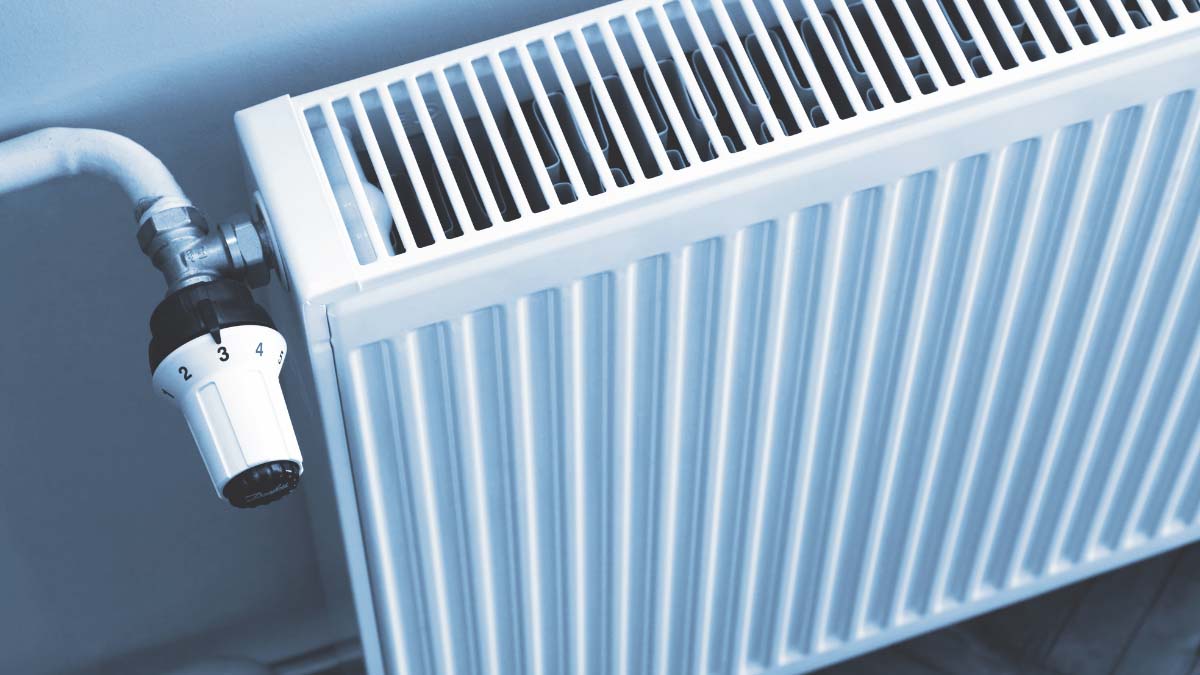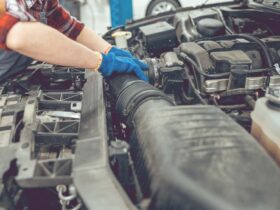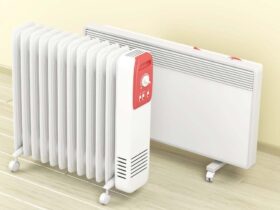A busted up radiator can cause your vehicle to overheat and break down. Timely repair or replacement is crucial to maintain engine performance.
Dealing with a busted radiator means addressing one of the critical components of your car’s cooling system. The radiator’s job is to keep the engine from overheating by dissipating heat through coolant fluids. Ignoring issues such as leaks or blockages can lead to significant engine damage and expensive repairs.
Car owners need to look out for signs like steam from under the hood, a spike in the temperature gauge, or coolant puddling under the car. Tackling radiator problems early can save you time and money, and help extend the life of your vehicle. Regular maintenance checks can prevent sudden radiator failures, ensuring your car remains reliable and roadworthy. Remember, a well-functioning radiator is vital to your vehicle’s overall health and efficiency.
Initial Symptoms Of Radiator Troubles
Catching radiator problems early can save your engine from serious damage. Know the signs to look out for. A faulty radiator often reveals itself through certain tell-tale symptoms. Stay alert to these changes in your vehicle’s performance.
Identifying Leaks
A primary symptom of radiator issues is leaking coolant. Coolant is the liquid that helps keep your engine cool. Check the ground beneath your parked car for bright-colored liquid. This could be green, orange, or yellow, indicating a leak.
- Visible puddles under the car
- Coolant levels dropping faster than usual
- Sticky residue on the radiator
Temperature Gauge Warnings
Another clear sign of trouble is your temperature gauge. It signals the engine’s heat level. A rising temperature gauge means possible radiator malfunction.
| Temperature Reading | What it Could Mean |
| Consistently High | Possible coolant leak or blockage |
| Fluctuating | Potential thermostat issue |
Keep an eye on your vehicle’s dashboard. Act quickly if the gauge moves towards “H” or into the red zone.

Stopgap Solutions On The Go
Facing a radiator emergency on the road? A busted-up radiator can be a nightmare, especially when you’re far from a mechanic. But don’t worry, there are stopgap solutions to get you rolling to safety. Let’s dive into some quick fixes that can help you manage the situation temporarily and keep your engine cool.
Temporary Sealants
Plug That Leak Fast! When your radiator springs a leak, a temporary sealant can be a lifesaver. Consider these off-the-shelf quick fixes:
- Radiator sealant: Pour it in and it’ll seal small punctures…
- Coolant system additives: They don’t just stop leaks butalso protect against corrosion.
Select the Right Sealant! Ensure it’s compatible with your car’s radiator. Avoid sealants that might gum up the works or cause more issues.
| Sealant Type | Use Case |
| Liquid | Small Holes |
| Tablet | Preventive Maintenance |
Application: Follow the instructions carefully. You don’t want to overdo it and clog the radiator.
The Epoxy Method
A Stronger Bond for Bigger Cracks. Epoxy can be a reliable temporary fix for larger cracks or holes in the radiator.
- Identify the Crack: Clean the area thoroughly.
- Mix the Epoxy: Follow the product guide for the best results.
- Apply Epoxy: Cover the entire damaged area. Let it dry completely.
Points to Remember: Wait for the engine to cool before applying epoxy. This ensures the best adhesion and effectiveness.
When To Call A Professional
A busted up radiator can leave you stranded if not fixed promptly. Radiators play a crucial role in keeping your engine cool and running smoothly. Recognizing the right time to call a professional is key. Look for signs like complex cracks or persistent overheating issues. Don’t ignore these red flags!
Complex Cracks
Radiators can develop cracks due to age or impact. A visual inspection might reveal small cracks, easy to miss. When cracks get complex, they affect the radiator’s efficacy.
DIY patch kits exist, but they offer a temporary fix. For complex cracks, professional hands ensure a thorough repair or replacement. Expert intervention prevents further engine damage.
Persistent Overheating Issues
Ignoring overheating signals can lead to engine failure. Persistent overheating might stem from hidden issues within the cooling system. These issues need a professional’s diagnostic tools and expertise.
- Coolant leaks: Puddles under the car signal a leak.
- Temperature gauge spikes: Indicates cooling system struggles.
- Steam from the hood: Steam indicates the engine overheated.
Address these signs quickly with a certified mechanic’s help. Delays can escalate repair costs and risk safety.

Assessing The Damage
If you suspect your radiator might be busted, assessing the damage is crucial. Identifying the issues early on can save you from overheating problems, engine damage, or costly repairs down the line. A careful evaluation involves a couple of key steps. First, visually inspect the radiator for any signs of trouble. Then, conduct pressure testing to ensure it’s sealed correctly.
Visual Inspection
Smart car owners always start with a visual inspection. Look for these clear signs:
- Coolant leaks – green or orange fluid under your car.
- Corrosion or rust on the radiator itself.
- Cracks or bends in the radiator fins.
Keep an eye out for pooled coolant, especially under the engine.
Pressure Testing Techniques
Pressure testing is a reliable method to check for radiator leaks. Here’s how you do it:
- Attach the pressure tester to the radiator.
- Pump it up to the pressure specified in the manual.
- Watch if the gauge drops, indicating a leak.
Remember, staying on top of radiator health keeps your engine in check!
Choosing The Right Tools And Materials
Dealing with a busted up radiator can be a daunting task. The right tools and high-quality materials are critical for a durable fix. This section of our blog focuses on the best toolkit and sealants to repair your radiator effectively. Let’s dive in.
Essential Toolkit
Starting with the fundamentals ensures a smooth repair process. Gather these tools before tackling your radiator repair:
- Wrench set – for loosening and tightening bolts
- Screwdrivers – flathead and Phillips for various screws
- Pliers – essential for gripping and bending materials
- Drain pan – to catch the coolant when draining the radiator
- Rags and cleaner – for surface prep and cleanup
Quality Sealants And Patches
| Sealant Type | Use Case | Durability Rating |
| Epoxy | Sealing small cracks | High |
| Silicone sealant | Waterproofing joints | Medium |
| Cold Weld | Major cracks and holes | High |
Selecting the right sealant can make or break your repair job. Ensure you choose one that matches the severity and type of your radiator’s damage.
Quick Fixes: Step-by-step Guide
Is your car’s radiator battered and leaking? Worry not! Follow our ‘Quick Fixes: Step-by-Step Guide’ to patch things up temporarily, until you can get professional help. This guide will show you how to apply a patch and inform you about the cure times for sealants. Let’s get your radiator from busted to temporarily operational!
Patch Application Process
Before you begin, ensure the engine is cool and the radiator is dry.
- Clean the damaged area on the radiator.
- Cut the patch to fit over the leak with some overlap.
- Apply an epoxy or sealant to the patch according to the product instructions.
- Press the patch firmly onto the leak.
- Hold it in place for the time specified on the sealant package.
These steps can keep your car running for a short time. Always remember, patches are a temporary fix!
Sealant Cure Times
Sealant products vary, so checking the cure time is crucial. Here’s a quick reference:
| Sealant Type | Cure Time |
| Epoxy | 6 hours |
| Silicone | 24 hours |
- Do not fill the radiator or start the engine until the cure time has passed.
- Check the sealant’s package for precise cure times.
Note: Your safety comes first. Wear gloves and protective eyewear when handling chemicals.

Preventative Measures For Future Protection
Your car’s health relies heavily on a working radiator. A busted-up radiator can mean trouble for your engine and your wallet. To prevent this, proactive steps are crucial. Let’s explore some key actions to shield your radiator from future harm.
Regular Maintenance Tips
Timely maintenance stops problems before they start. Keep these points in mind:
- Inspect the radiator for leaks or rust regularly.
- Check for proper coolant levels and top them off if necessary.
- Look at the hoses for signs of wear or damage.
- Have a professional check the radiator cap for proper seal.
- Remember, winter brings challenges. Use antifreeze to avoid freezing.
Coolant System Upkeep
Your car’s coolant system is the lifeblood of the radiator. Maintenance ensures longevity. See the table below for a quick guide:
| Task | Frequency |
| Flush the coolant system | Every 40,000 miles or as advised |
| Replace coolant | With every flush |
| Inspect coolant quality | At every oil change |
| Check for leaks | During regular maintenance |
Stick to a routine schedule. An expert can spot issues you might miss. Always use manufacturer-recommended coolant. Cutting corners can lead to damage and costly repairs.
Understanding Radiator Function And Failures
Understanding Radiator Function and Failures
Radiators are key to keeping engines cool. They manage heat produced by engines. A failing radiator can cause big problems. Let’s dive into their role and common issues.
Role in Engine Cooling
Role In Engine Cooling
The radiator’s job is simple but crucial. It takes heat away from the engine. This prevents overheating.
Coolant absorbs the engine heat. It then moves to the radiator. Here, air cools it down. The cycle repeats to keep the engine at the right temperature.
Common Points of Failure
Common Points Of Failure
Radiators can fail for several reasons. Each cause can lead to a ‘busted up’ radiator. Here are the most common issues:
- Leaks: Coolant can escape from holes or cracks.
- Corrosion: Rust and corrosion damage the metal parts.
- Blockages: Deposits can block the coolant flow.
- Thermostat failure: A faulty thermostat disrupts coolant circulation.
- Wear and tear: Over time, parts wear out and fail.
Regular checks help spot problems early. This keeps your engine safe from harm.
Emergency Situations: What To Do
Your car’s radiator just busted—steam billows from under the hood and the temperature gauge spikes. It’s an emergency, no doubt, and keeping calm is key. Understanding what to do in such a scenario ensures safety and might prevent further damage to your vehicle. Keep reading for practical steps you can follow.
Safe Engine Shutdown
When your radiator fails, the first goal is to stop the engine to halt further damage. Follow these steps:
- Turn on your hazard lights. This alerts other drivers to your situation.
- Do not open the hood immediately. The engine and radiator could be extremely hot and lead to burns.
- Find a safe place to pull over. Avoid stopping in a dangerous spot.
- Shut off the engine. Wait for at least 30 minutes for the engine to cool.
- Stay in the vehicle if it’s unsafe outside. Call for help if needed.
Roadside Assistance Options
After safely stopping the car, the next step is to seek professional help. Explore these options:
- Contact roadside assistance. If you have a service provider, call them.
- Check your auto insurance. Some offer emergency services.
- Use a car assistance mobile app. Many have fast response features.
- Call a friend or family member. They might recommend a trusted mechanic.
Keep a list of contacts for such instances in both your phone and glove compartment. Having these on hand can significantly reduce stress in emergency situations.
Post-repair: Ensuring Longevity
Getting your radiator repaired marks the end to immediate car troubles. The journey to a long-lasting repair begins right after. Care and vigilance can keep your radiator in top condition for miles to come. From performing post-repair tests to monitoring for recurring issues, every action contributes to your radiator’s longevity.
Post-repair Tests
After fixing a busted-up radiator, specific tests are crucial. They confirm the success of the repair. Leak tests and pressure tests are mandatory.
- Coolant System Pressure Test: Ensures no leaks are present.
- Thermostat Check: Confirms it opens at the right temperature.
- Flow Test: Verifies coolant circulates without obstruction.
Monitoring For Recurring Issues
Constant vigilance keeps repair work intact. Monitor your car’s performance closely. Check the temperature gauge and stay alert for unusual noises or leaks.
| Timeframe | Checklist Item |
| Weekly | Coolant level and color |
| Monthly | Hoses and belts |
| Bi-Annually | Professional inspection |
Stay proactive with maintenance. Schedule regular check-ups and change coolant as advised.
Use a warning light as a sign to seek immediate help. Regular upkeep and alertness will ensure your radiator repair lasts longer and your drives stay smooth.
Frequently Asked Questions On Busted Up Radiator
Can A Busted Radiator Be Repaired?
Most minor radiator damage can be repaired, but severe cases might require a full replacement for optimal vehicle performance.
What Causes Radiators To Fail?
Radiators can fail due to corrosion, leaks, clogging, or damage from an accident, leading to overheating or coolant loss.
How To Prevent Radiator Damage?
Regular maintenance, including coolant flushes and inspections, can help prevent radiator damage and extend its lifespan.
What Are Signs Of Radiator Problems?
Signs include overheating, coolant leaks, discolored coolant, low coolant levels, and a malfunctioning thermostat or water pump.
What’s The Cost To Replace A Radiator?
The replacement cost varies by vehicle make and model, but typically ranges from $300 to $1200 including parts and labor.
Conclusion
Dealing with a busted up radiator can be daunting, but prompt action is key. Remember to assess, repair, or replace as needed. Regular maintenance is your best safeguard against future issues. Keep your cool, and your radiator will follow suit.
Safe driving and happy journeys!






Leave a Reply